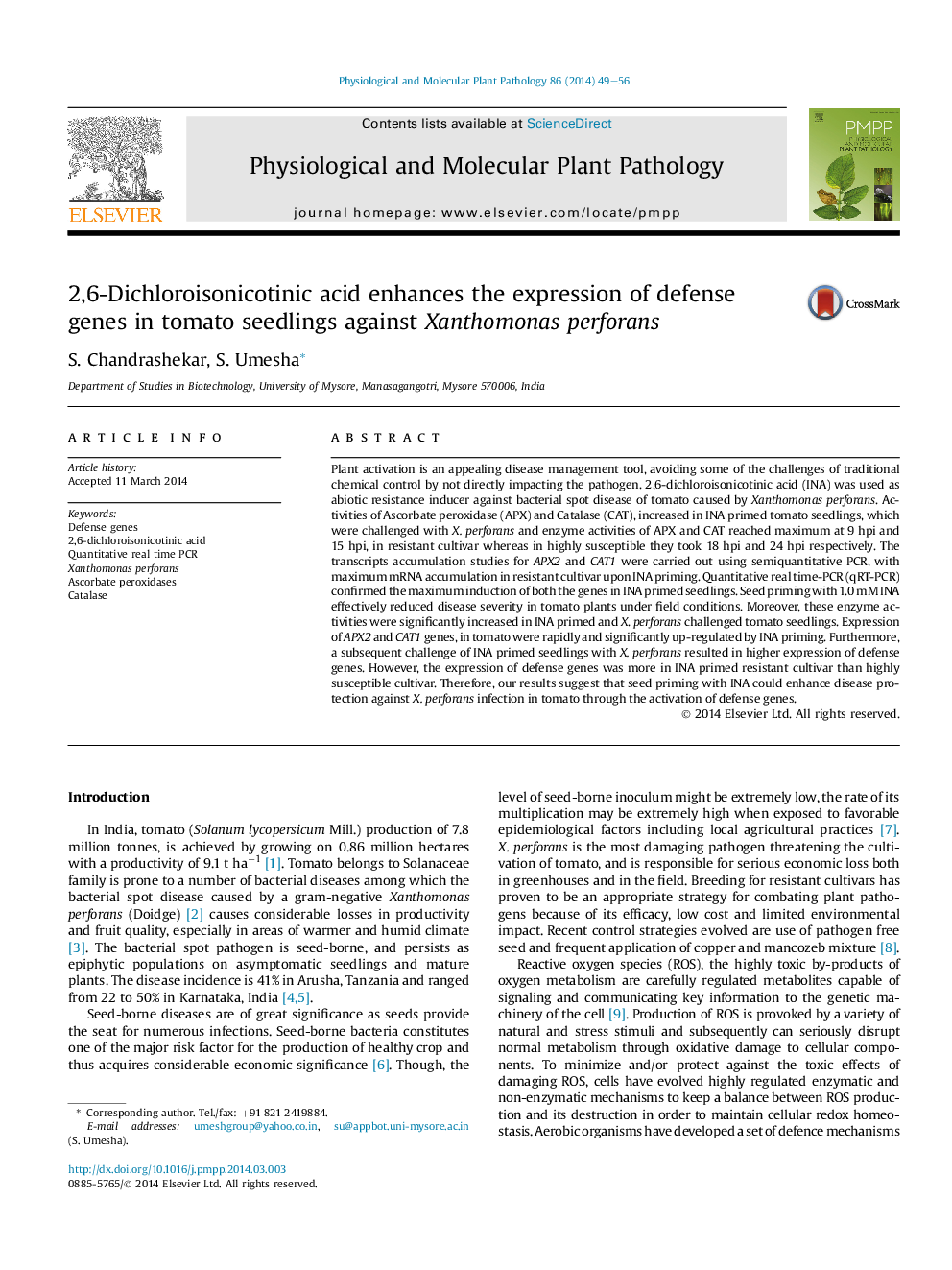| Article ID | Journal | Published Year | Pages | File Type |
|---|---|---|---|---|
| 2836316 | Physiological and Molecular Plant Pathology | 2014 | 8 Pages |
•In this study, we have tested INA as the host-resistance inducer against bacterial spot of tomato.•INA has improved tomato seed quality parameters significantly and reduced bacterial spot disease.•INA priming triggers host-resistance by regulating defense genes upon challenged with pathogen.•This increased gene expression is directly proportional to the degree of host-resistance.•The increased or decreased genes expressions were confirmed by RT-PCR and q-PCR.
Plant activation is an appealing disease management tool, avoiding some of the challenges of traditional chemical control by not directly impacting the pathogen. 2,6-dichloroisonicotinic acid (INA) was used as abiotic resistance inducer against bacterial spot disease of tomato caused by Xanthomonas perforans. Activities of Ascorbate peroxidase (APX) and Catalase (CAT), increased in INA primed tomato seedlings, which were challenged with X. perforans and enzyme activities of APX and CAT reached maximum at 9 hpi and 15 hpi, in resistant cultivar whereas in highly susceptible they took 18 hpi and 24 hpi respectively. The transcripts accumulation studies for APX2 and CAT1 were carried out using semiquantitative PCR, with maximum mRNA accumulation in resistant cultivar upon INA priming. Quantitative real time-PCR (qRT-PCR) confirmed the maximum induction of both the genes in INA primed seedlings. Seed priming with 1.0 mM INA effectively reduced disease severity in tomato plants under field conditions. Moreover, these enzyme activities were significantly increased in INA primed and X. perforans challenged tomato seedlings. Expression of APX2 and CAT1 genes, in tomato were rapidly and significantly up-regulated by INA priming. Furthermore, a subsequent challenge of INA primed seedlings with X. perforans resulted in higher expression of defense genes. However, the expression of defense genes was more in INA primed resistant cultivar than highly susceptible cultivar. Therefore, our results suggest that seed priming with INA could enhance disease protection against X. perforans infection in tomato through the activation of defense genes.
